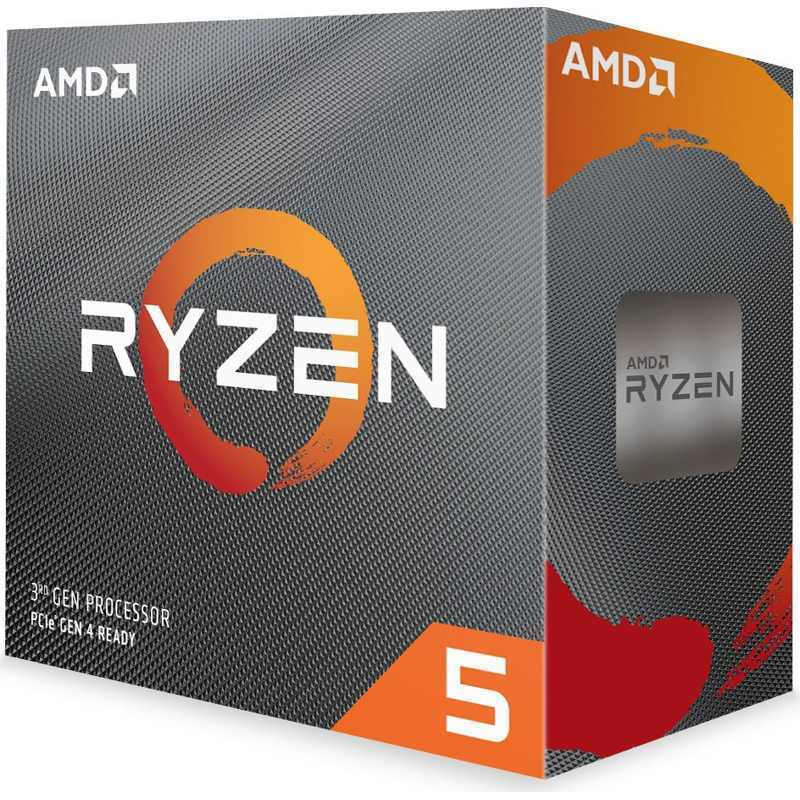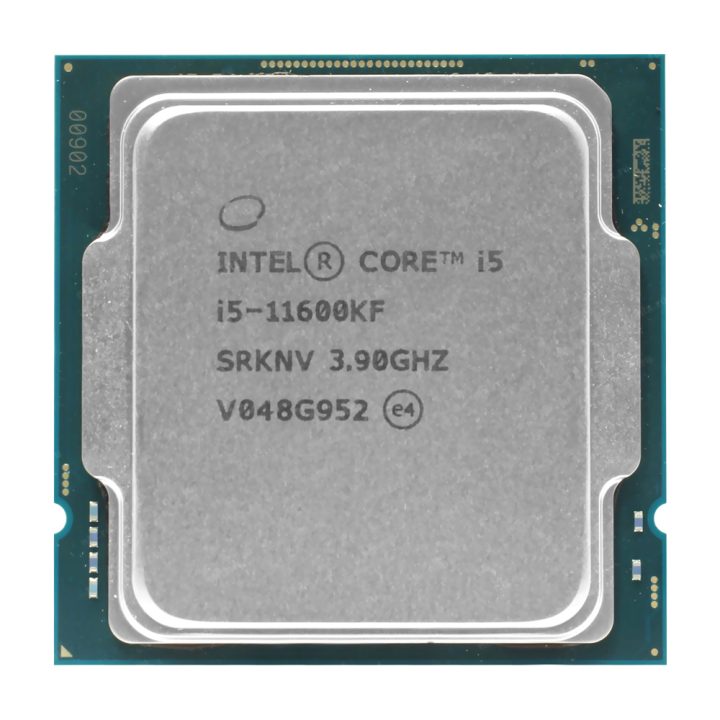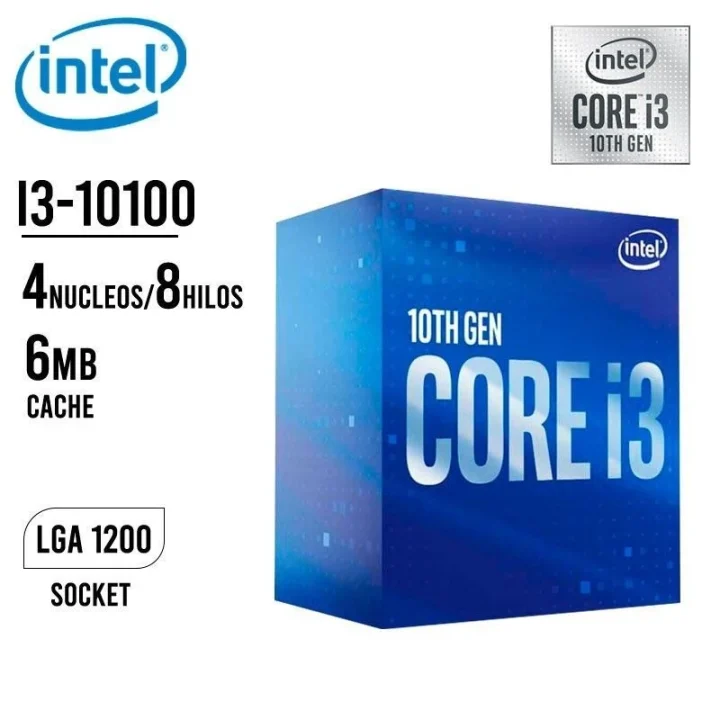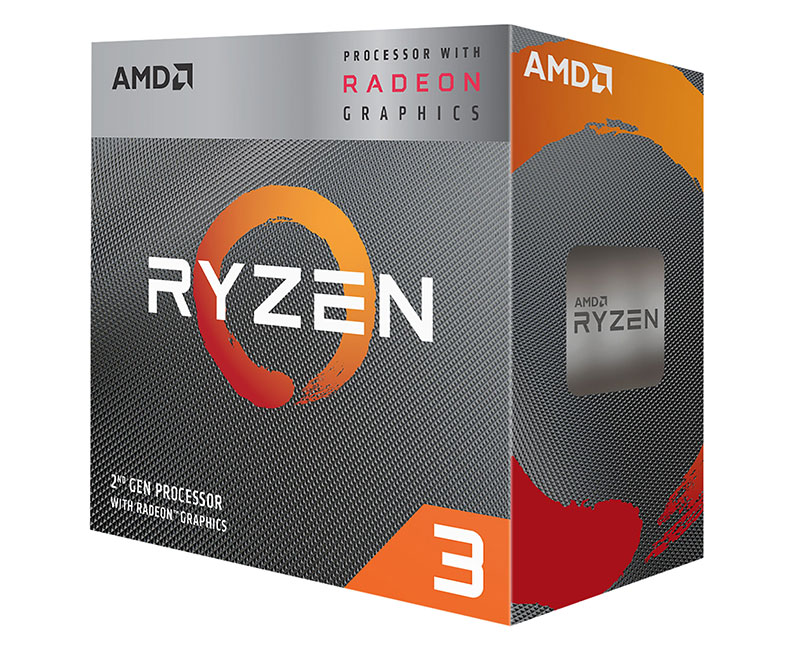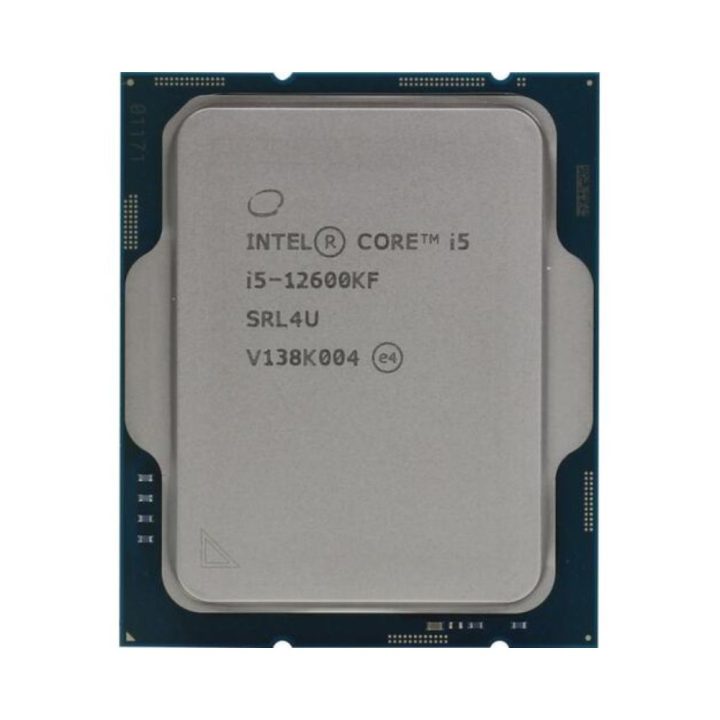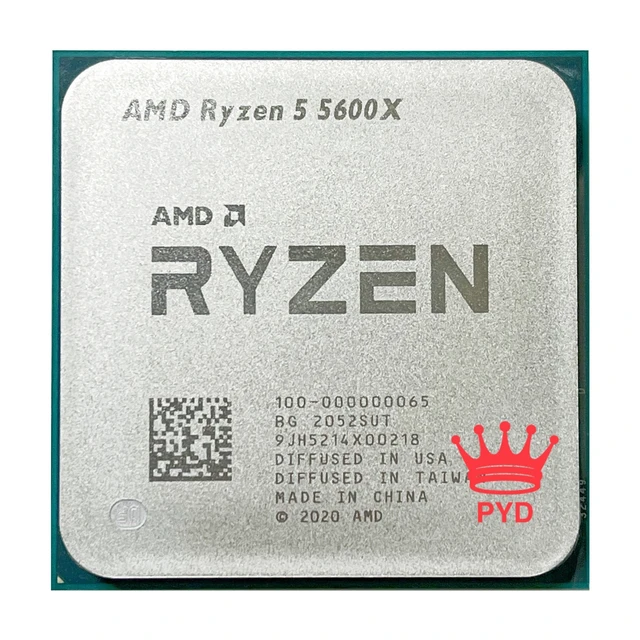Breaking Down the Specs: A Closer Look at the AMD Ryzen 5 3500 3.6GHz Processor
The AMD Ryzen 5 3500 is a mid-range processor that has been making waves in the PC enthusiast community. As part of AMD’s Ryzen lineup, the Ryzen 5 3500 offers a compelling balance of performance, efficiency, and value, making it an attractive option for a wide range of users, from budget-conscious gamers to content creators. In this article, we’ll delve into the key features and capabilities of the Ryzen 5 3500, exploring its positioning within AMD’s product lineup and its potential impact on the mid-range CPU market.
The Ryzen 5 3500 is a six-core, six-thread processor that sits in the middle of AMD’s Ryzen 5 series. It is designed to provide a significant performance boost over previous-generation Ryzen 5 processors, while also offering improved energy efficiency and thermal management. The Ryzen 5 3500 is positioned to compete with Intel’s Core i5 processors, offering a compelling alternative for users who prioritize a balance of performance, power efficiency, and value.
One of the key factors that sets the Ryzen 5 3500 apart is its positioning within AMD’s Ryzen lineup. While the higher-end Ryzen 5 3600 and Ryzen 7 3700X offer more cores and threads, the Ryzen 5 3500 is designed to provide an excellent price-to-performance ratio, making it an attractive option for budget-conscious builders and upgraders. With its competitive pricing and impressive performance capabilities, the Ryzen 5 3500 is poised to appeal to a wide range of users, from casual gamers to professionals who require a capable and efficient processor for their daily tasks.
Key Takeaways
- The AMD Ryzen 5 3500 is a powerful processor with a 3.6GHz clock speed
- The Zen 2 microarchitecture provides improved performance and efficiency
- With 6 cores and 6 threads, the Ryzen 5 3500 offers strong multi-threaded performance
- The processor’s TDP and power efficiency make it a good choice for energy-conscious users
- Compatibility and motherboard considerations are important factors to consider when choosing the Ryzen 5 3500
Architectural Overview: Zen 2 Microarchitecture
At the heart of the Ryzen 5 3500 is AMD’s Zen 2 microarchitecture, which represents a significant leap forward in terms of performance and efficiency compared to the previous Zen and Zen+ architectures. The Zen 2 microarchitecture introduces a number of key improvements, including a refined 7nm manufacturing process, increased instructions per cycle (IPC), and enhanced power efficiency.
One of the standout features of the Zen 2 microarchitecture is its improved IPBy optimizing the execution units, branch prediction, and memory subsystem, AMD has been able to achieve a notable increase in IPC compared to the previous Zen and Zen+ architectures. This translates to better performance in single-threaded workloads, which can be particularly important for gaming and other applications that rely heavily on single-threaded performance.
In addition to the IPC improvements, the Zen 2 microarchitecture also boasts enhanced energy efficiency. The move to the 7nm manufacturing process has allowed AMD to reduce the overall power consumption of the Ryzen 5 3500, while also improving thermal management and allowing for higher clock speeds. This improved power efficiency not only benefits the processor’s performance-per-watt ratio but also helps to reduce system cooling requirements and overall energy consumption, making the Ryzen 5 3500 an attractive option for users who prioritize energy-efficient computing.
The Zen 2 microarchitecture also introduces other key features, such as improved branch prediction, enhanced cache management, and better memory latency optimization. These architectural enhancements contribute to the Ryzen 5 3500’s overall performance and efficiency, making it a compelling choice for a wide range of computing tasks, from gaming to content creation and productivity workloads.
Processor Specifications: Cores, Threads, and Clock Speeds
The AMD Ryzen 5 3500 is a six-core, six-thread processor, which means it has six physical cores and six logical threads. This configuration provides a solid foundation for both single-threaded and multi-threaded workloads, offering a balance of performance and efficiency.
In terms of clock speeds, the Ryzen 5 3500 has a base clock of 3.6 GHz and a maximum boost clock of 4.1 GHz. This combination of core count and clock speeds allows the processor to deliver impressive performance in a wide range of applications, from gaming to productivity tasks and content creation.
It’s worth noting that the Ryzen 5 3500’s core and thread count places it slightly below the more powerful Ryzen 5 3600, which features six cores and twelve threads. However, the Ryzen 5 3500’s lower core and thread count, combined with its competitive pricing, make it an attractive option for users who don’t require the additional performance headroom offered by the Ryzen 5 3600.
The Ryzen 5 3500’s clock speeds are also noteworthy, as they provide a good balance between single-threaded and multi-threaded performance. The 3.6 GHz base clock ensures that the processor can handle single-threaded workloads efficiently, while the 4.1 GHz boost clock allows the Ryzen 5 3500 to deliver impressive performance in multi-threaded applications that can take advantage of its six cores and six threads.
Overall, the Ryzen 5 3500’s core and thread configuration, along with its clock speed range, make it a well-rounded processor that can handle a variety of computing tasks with ease, from gaming and content creation to productivity and everyday use.
Performance Benchmarks: Single-Threaded and Multi-Threaded
When it comes to the performance of the AMD Ryzen 5 3500, the processor delivers impressive results in both single-threaded and multi-threaded workloads.
In single-threaded performance, the Ryzen 5 3500 showcases its strength, thanks to the improvements made to the Zen 2 microarchitecture. In benchmarks that focus on single-threaded performance, such as gaming and lightly-threaded productivity tasks, the Ryzen 5 3500 consistently outperforms its predecessors and often matches or even surpasses the performance of Intel’s competing Core i5 processors. This single-threaded prowess is particularly important for users who prioritize gaming performance or applications that rely heavily on single-threaded performance.
When it comes to multi-threaded performance, the Ryzen 5 3500’s six cores and six threads allow it to excel in workloads that can take advantage of parallel processing. In benchmarks that leverage multiple threads, such as video encoding, 3D rendering, and heavily-threaded productivity tasks, the Ryzen 5 3500 demonstrates its ability to deliver impressive performance. While it may not reach the heights of the higher-core-count Ryzen 5 3600 or Ryzen 7 3700X, the Ryzen 5 3500 still manages to provide a significant performance boost over previous-generation Ryzen 5 processors and often outperforms Intel’s Core i5 offerings in multi-threaded scenarios.
It’s important to note that the Ryzen 5 3500’s performance can be further optimized by pairing it with fast, high-capacity DDR4 memory, as the processor’s memory subsystem plays a crucial role in its overall performance. Additionally, the Ryzen 5 3500’s overclocking potential, which we’ll explore in a later section, can provide an extra performance boost for users who are willing to tinker with their system’s settings.
Overall, the AMD Ryzen 5 3500 delivers a well-balanced performance profile, excelling in both single-threaded and multi-threaded workloads. Its combination of core count, clock speeds, and architectural improvements make it a compelling choice for a wide range of users, from gamers to content creators and professionals.
Thermal Design Power (TDP) and Power Efficiency
| Specs | Details |
|---|---|
| Processor Type | AMD Ryzen 5 3500 |
| Base Clock Speed | 3.6 GHz |
| Max Boost Clock | 4.1 GHz |
| Cores/Threads | 6/6 |
| L1 Cache | 384KB |
| L2 Cache | 3MB |
| L3 Cache | 16MB |
| Socket | AM4 |
| Thermal Design Power (TDP) | 65W |
One of the key advantages of the AMD Ryzen 5 3500 is its impressive power efficiency and thermal management capabilities. The processor’s Thermal Design Power (TDP) is rated at 65 watts, which is a relatively low figure compared to some of its more power-hungry competitors.
The Ryzen 5 3500’s low TDP is a direct result of the improvements made to the Zen 2 microarchitecture and the 7nm manufacturing process. By optimizing the processor’s power consumption and heat generation, AMD has been able to create a mid-range CPU that not only delivers excellent performance but also requires less cooling and power delivery compared to previous-generation Ryzen processors.
This power efficiency translates to several benefits for users. Firstly, the Ryzen 5 3500’s lower TDP means that it can be effectively cooled by more affordable and compact cooling solutions, such as air coolers or even some entry-level liquid coolers. This can be particularly advantageous for users building compact or budget-friendly systems, as they can save on the cost and complexity of the cooling system.
Secondly, the Ryzen 5 3500’s power efficiency also contributes to improved system thermals and overall energy consumption. With a lower TDP, the processor generates less heat, which can result in lower system temperatures and reduced strain on the system’s cooling solution. This, in turn, can lead to quieter system operation and potentially longer component lifespan, as the system is not subjected to as much thermal stress.
Furthermore, the Ryzen 5 3500’s power efficiency can have a positive impact on a system’s overall energy consumption and electricity bills. By drawing less power, the processor can contribute to a more energy-efficient system, making it an attractive option for users who are conscious about their energy usage and environmental impact.
Overall, the Ryzen 5 3500’s low TDP and impressive power efficiency are key selling points that set it apart from some of its more power-hungry competitors. This combination of performance and efficiency makes the Ryzen 5 3500 a well-rounded and versatile processor that can excel in a wide range of computing scenarios, from gaming to productivity and content creation.
Memory Support and Overclocking Capabilities
The AMD Ryzen 5 3500 offers robust memory support and impressive overclocking capabilities, further enhancing its versatility and performance potential.
In terms of memory support, the Ryzen 5 3500 is compatible with DDR4 memory, with official support for up to 3200 MHz in dual-channel configurations. This high-speed memory support is crucial for maximizing the processor’s performance, as the Ryzen architecture is heavily dependent on memory bandwidth and latency. By pairing the Ryzen 5 3500 with fast, high-capacity DDR4 memory, users can unlock additional performance gains in both single-threaded and multi-threaded workloads.
Beyond the official memory support, the Ryzen 5 3500 also offers the ability to overclock the memory, allowing users to push the memory speeds even further. This can be particularly beneficial for users who are looking to extract the maximum performance from their systems, as higher memory speeds can contribute to improved overall system performance.
In terms of overclocking the processor itself, the Ryzen 5 3500 also presents impressive overclocking potential. While the processor’s base and boost clock speeds are already quite respectable, experienced users can often achieve significant performance gains by manually overclocking the Ryzen 5 3500.
Through the use of AMD’s Ryzen Master utility or other third-party overclocking tools, users can fine-tune the processor’s clock speeds, voltage, and other parameters to push the Ryzen 5 3500 beyond its stock performance levels. This overclocking headroom can be particularly useful for users who are looking to maximize the processor’s performance for gaming, content creation, or other demanding workloads.
It’s important to note that overclocking the Ryzen 5 3500 may require more robust cooling solutions, as the increased power draw and heat generation can put additional strain on the system’s thermal management. However, with the right cooling setup and a bit of experimentation, users can often achieve significant performance gains through overclocking, further enhancing the Ryzen 5 3500’s capabilities.
Overall, the Ryzen 5 3500’s memory support and overclocking potential make it a highly versatile and customizable processor, allowing users to tailor its performance to their specific needs and preferences.
Integrated Graphics and Multimedia Features
While the AMD Ryzen 5 3500 is primarily designed as a powerful CPU for gaming and productivity workloads, it also offers some basic integrated graphics capabilities and multimedia features that can be useful for certain users.
The Ryzen 5 3500 features an integrated Radeon Vega 8 graphics solution, which provides a basic level of graphics performance for tasks such as video playback, light gaming, and basic content creation. This integrated graphics solution is not intended to replace a dedicated graphics card, but it can be a viable option for users who don’t require high-end gaming or graphics performance, such as those building a budget-friendly system or using the processor for office productivity tasks.
In terms of multimedia features, the Ryzen 5 3500’s integrated graphics solution supports hardware-accelerated video decoding and encoding, which can be beneficial for users who frequently work with video content. This hardware acceleration can help offload certain video processing tasks from the CPU, improving overall system performance and efficiency.
Additionally, the Ryzen 5 3500 supports various multimedia codecs and standards, including H.264, H.265 (HEVC), and VP9, ensuring compatibility with a wide range of video formats. This can be particularly useful for users who consume or create multimedia content on their systems.
While the Ryzen 5 3500’s integrated graphics capabilities are not intended to replace a dedicated graphics card for demanding gaming or professional graphics workloads, they can still be a valuable asset for users who have modest graphics requirements or who are building a budget-friendly system. The processor’s multimedia features also contribute to its versatility, making it a suitable choice for a wide range of computing tasks, from basic gaming and video playback to more advanced content creation workflows.
It’s important to note that the performance of the Ryzen 5 3500’s integrated graphics will be limited compared to dedicated graphics cards, and users who require more advanced graphics capabilities should consider pairing the processor with a dedicated GPU for the best overall performance.
Compatibility and Motherboard Considerations
The AMD Ryzen 5 3500 is designed to be compatible with a wide range of AMD motherboard chipsets, allowing users to build a system that best suits their needs and budget.
The Ryzen 5 3500 is compatible with motherboards based on the AMD X470 and B550 chipsets, as well as the older X370 and B450 chipsets. This broad compatibility ensures that users have a variety of options when it comes to selecting the right motherboard to pair with the Ryzen 5 3500.
When choosing a motherboard for the Ryzen 5 3500, it’s important to consider factors such as the chipset’s features, overclocking capabilities, expansion options, and overall quality. The X470 and B550 chipsets, for example, offer more advanced features and better overall performance compared to the older X370 and B450 chipsets.
Users who prioritize features like PCIe 4.0 support, enhanced power delivery, and advanced overclocking capabilities may want to opt for a B550 or X470 motherboard. These chipsets can provide a more robust platform for the Ryzen 5 3500, unlocking its full potential and allowing for more advanced system customization and optimization.
On the other hand, users who are building a more budget-conscious system or don’t require the latest features may find that a B450 or even an X370 motherboard can still provide a solid foundation for the Ryzen 5 3500. These older chipsets may offer fewer features, but they can still deliver a reliable and capable platform for the processor.
Regardless of the motherboard chipset chosen, it’s essential to ensure that the BIOS is up-to-date to ensure full compatibility with the Ryzen 5 3500. Some older motherboards may require a BIOS update to support the latest Ryzen processors, so it’s important to check the manufacturer’s website for the latest BIOS versions and update instructions.
By carefully selecting the right motherboard to pair with the AMD Ryzen 5 3500, users can build a system that not only delivers excellent performance but also meets their specific needs and budget requirements.
Evaluating the AMD Ryzen 5 3500
In conclusion, the AMD Ryzen 5 3500 is a highly capable and versatile mid-range processor that offers an impressive balance of performance, efficiency, and value. With its Zen 2 microarchitecture, the Ryzen 5 3500 delivers excellent single-threaded and multi-threaded performance, making it a compelling choice for a wide range of computing tasks, from gaming and content creation to productivity and everyday use.
One of the key strengths of the Ryzen 5 3500 is its power efficiency and thermal management capabilities. The processor’s low 65-watt TDP allows for more affordable and compact cooling solutions, while also contributing to improved system thermals and reduced energy consumption. This makes the Ryzen 5 3500 an attractive option for users who are conscious about their system’s power usage and environmental impact.
Additionally, the Ryzen 5 3500’s memory support and overclocking potential add to its versatility, allowing users to further optimize the processor’s performance to suit their specific needs. The integrated graphics and multimedia features, while not intended to replace a dedicated GPU, can still be useful for users with more modest graphics requirements.
When it comes to the Ryzen 5 3500’s positioning in the market, it is considered a mid-range processor that offers a good balance between performance and price. It is suitable for gamers, content creators, and everyday users who require a reliable and efficient processor for their tasks. With its six cores and six threads, the Ryzen 5 3500 can handle multitasking and demanding applications with ease. Overall, it provides a solid performance for its price point and is a popular choice for budget-conscious consumers looking for a capable processor.
FAQs
What are the key specifications of the AMD Ryzen 5 3500 3.6GHz Processor?
The AMD Ryzen 5 3500 3.6GHz Processor is a 6-core, 6-thread processor with a base clock speed of 3.6GHz and a max boost clock speed of 4.1GHz. It has a total cache of 19MB, a TDP of 65W, and is built on the 7nm process.
What is the performance of the AMD Ryzen 5 3500 3.6GHz Processor?
The AMD Ryzen 5 3500 3.6GHz Processor offers strong performance for gaming, content creation, and multitasking. With its 6 cores and 6 threads, it can handle demanding tasks with ease.
What are the key features of the AMD Ryzen 5 3500 3.6GHz Processor?
The AMD Ryzen 5 3500 3.6GHz Processor features AMD’s Zen 2 architecture, which provides improved performance and efficiency. It also supports PCIe 4.0 for faster data transfer speeds and is compatible with AM4 socket motherboards.
Is the AMD Ryzen 5 3500 3.6GHz Processor suitable for gaming?
Yes, the AMD Ryzen 5 3500 3.6GHz Processor is suitable for gaming, offering strong performance for both mainstream and AAA titles. Its 6 cores and 6 threads provide smooth gameplay and responsiveness.
What are the compatible motherboards for the AMD Ryzen 5 3500 3.6GHz Processor?
The AMD Ryzen 5 3500 3.6GHz Processor is compatible with AM4 socket motherboards, including those based on the B450, X470, and X570 chipsets. It is important to check for BIOS updates to ensure compatibility with specific motherboard models.
